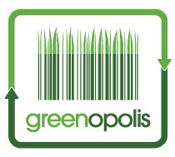Seeing Choices, Choosing to Lead: Wise Companies Get Ahead of the Curve
Seeing Choices, Choosing to Lead: Wise Companies Get Ahead of the Curve
Nike faced a choice back in the 1990’s with issues arising around working conditions in Asian factories, large amount of waste in product manufacturing, and the raw materials consumption involved in making and shipping and selling shoes all over the world. Sarah Severn, at the time head of Sustainable Development for Nike said “We faced a choice, of either complying with the minimums and staying out of trouble, or becoming a leader in our industry. They chose the latter, setting new standards for labor practices, waste and CO2 reduction. They’ve been voted the top Corporate Social Responsibility firm for several years running.
Photo: Toyota
Around that same time, Toyota faced a similar choice, continue to base their future on internal combustions engine and just tinker with fuel efficiency, or strike out in a different direction, acknowledging the looming end of “gas to burn”, tighter emissions restriction and waste CO2 issues. We all know what they did- introduce the Prius and a new generation of gas-electric vehicles, which have been popular enough to pave the way for all electric and hydrogen vehicles.
Once companies see clearly that they have a simple choice to make—lead the way or shift the burden to someone else—they can start to make serious investments.
The little drawing above represents the choices facing so many companies today. The upper loop represents the decision to do as little as possible and avoid the impact of your choices by shifting the burden to nature, which is really onto our collective air, water, soils, forests, etc. The problem might be fixed for the company in the short term, but it doesn’t go away, and comes back harder in the long run. Companies try ignoring the issue whatever it is, believing that damage to a watershed, greenhouse gas emis¬sions, or increasing waste is not their problem. Because this may give the organization a negative public image, companies often also try “green¬washing,” or improving their image through public relations campaigns, lobbying, minimal waste reduction programs, or making minor product changes (like hybrid SUVs that get poorer gas mileage than conventional cars of a decade ago). They continue to choose to operate in the upper loop because they think it will be easier, cheaper, and faster. But all the while the real problems are growing—as are the risks associated with unsustainable business practices.
But there is another choice. The lower loop, in which we create funda¬mental solutions, means investing in sustainable solutions that are regen¬erative- really fix the problem. In this “innovation and leadership loop” you take responsibility for your impact on the larger world.
The Impact is cumulative.
As Sarah Severn says, the choice to lead becomes crucial. While no one organization can be accused of causing a whole problem, the effects of many indi¬vidual companies choosing the upper loop have that impact. On the other hand, when one or more companies in an industry stops blaming others or “the system” and take responsibility for being part of the problem, they can play a pivotal role in becoming part of the solu¬tion, and influencing others to do likewise.
Consumers can help the companies make the right choice. By selecting products with less packaging, and waste, that use little energy, or emit less waste into our air, water and soils, we can vote with our dollars. Those votes are always counted. So find out who the leaders are, on these pages or elsewhere, and support the companies leading the way to a cradle to cradle economy.
Greenopolis.com is dedicated to our users. We focus our attention on changing the world through recycling, waste-to-energy and conservation. We reward our users for their sustainable behaviors on our website, through our Greenopolis Tracking Stations and with curbside recycling programs.
GREENOP4622

